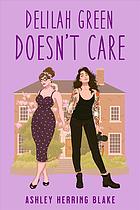Simmons, William. Queer Formalism: The Return. Floating Opera Press. 2021. $18.00. 88p. PB. 978-3982389400.
Simmons’ Queer Formalism: The Return is academic prose punctuated with a transparency not often found in scholarly works. Within this relatively short read is a thoughtful analysis of work by queer and “queered” artists, through which Simmons explores the elusive definition of queer formalism. The handful of long-form essays expands on Simmons’ previous work and dares the reader to dismantle the binary critiques usually imposed on queer art, mainly abstraction versus figuration. A critique of critique itself, Simmons’ illustrates concrete connections between seemingly unconnected works in order to make his case.
The inherent paradox of queer formalism makes for a somewhat challenging read, and yet it still functions as a window into chronically underrepresented queer artistry. Simmons’ writing is a blend of the scholarly and poetic; amidst educated analysis (sometimes beyond my realm of understanding) are heart-wrenchingly vulnerable moments of sincerity and self-reflection. Though possibly considered unseemly in the academic world to concede mistakes in previous work, Simmons takes the time to reflect on past claims and recontextualize them as needed. Rather than damage his authority, this tactic bolsters his credibility and aligns with many of the essay’s central themes. For those unfamiliar with the art world, the works that Simmons cites may be unfamiliar. The essays include photos of some of the pieces mentioned, but some arguments may remain abstract unless the reader acquaints themselves with the works being analyzed. With that in mind, Queer Formalism: The Return can be a thought of as a catalyst for further exploration.
For art scholars, Queer Formalism: The Return is a delightful challenge to well-established frameworks for critique. An art history degree from Harvard is not necessary to share Simmons’ strong feelings about the arts; however, readers unfamiliar with the nuances of art theory may want to conduct some preliminary research on queer formalism and the artistic works Simmons’ references before delving into these essays.
Reviewed by Anastasia Wright
